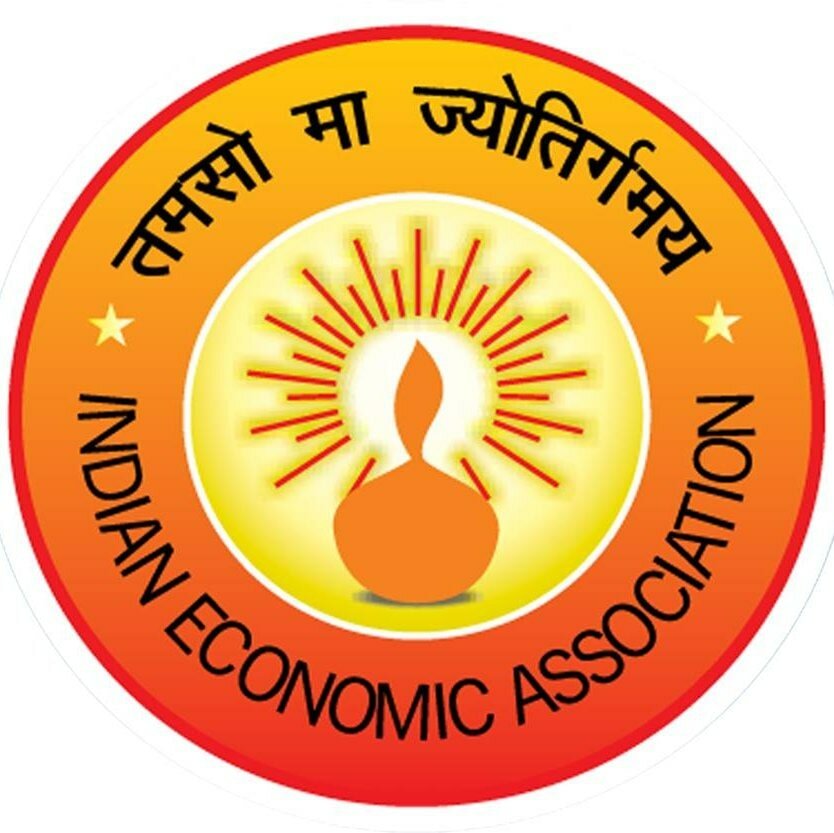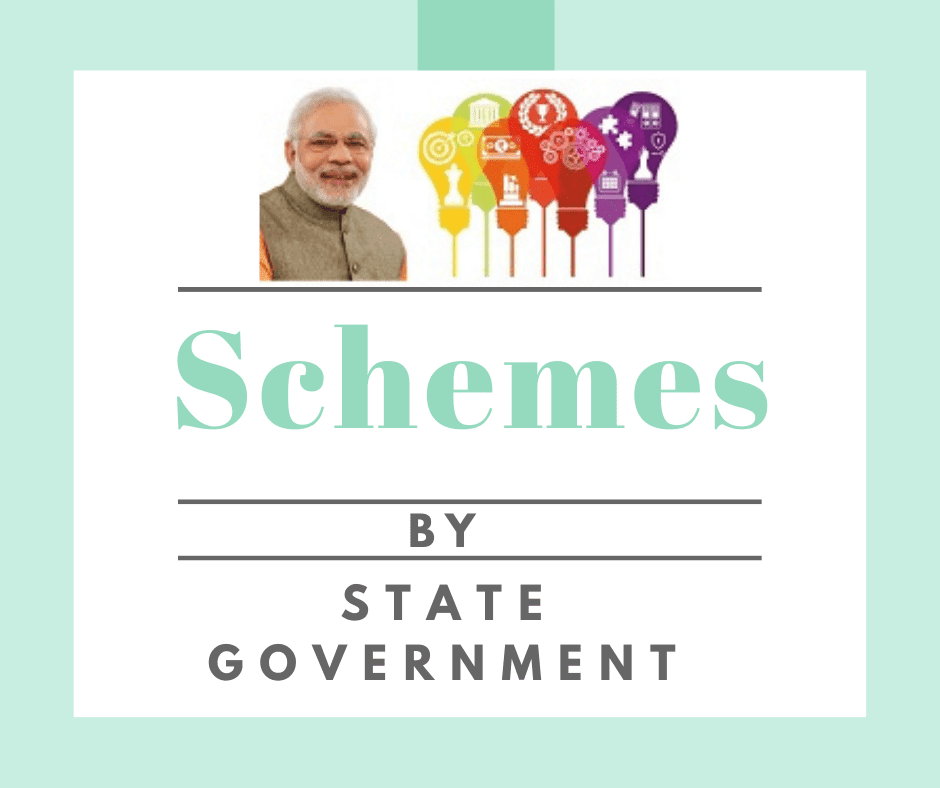A Brief History of Indian Economic Association
Professional bodies, like the Indian Economic Association are generally organised on the basis of voluntary initiative and co-operation. Such organisations see the light of the day mostly because of the Herculean efforts and commanding personalities of the founders and chief promoters. It is their zeal, enthusiasm and dedication which provide the necessary motive power for the healthy growth and development of such bodies. Economists all over India must and will remain grateful to all such leading persons who are mainly responsible for the present growth and stature which the Indian Economic Association has achieved through the past seventy six years of its existence.

|
| Source Image : Indian Economic Association |
The Indian Economic association from the beginning has been getting considerable support from the teachers and scholars and Economics in the universities, colleges, and other academic institutions. This has helped it to preserve the academic independence of the Association. However economists in research organisations and in government departments, financial and other institutions connected with economic matters have participated in the Association’s proceedings as professional economists. The Association all along has been an all India body and has drawn in its fold economists from different parts of the country. Since the Associations’s Annual Conferences attract a large number of teachers and scholars from different parts of India and discussions are conducted in a measure of professional objectivity and in a ‘free for all’ atmosphere, the Indian Economic Association’s Annual Conferences have emerged as one of the prominent avenues for dissiminating and initiating professional thinking on scientific matters and for moulding public opinion on academic and policy issues.
It is interesting to observe from past records that Bengal, which has many firsts to its credit, is known for the starting and organising of the Bengal Economic Association in 1916. Under the auspicies of this Association, an Economic Conference was convened during the first week of January, 1916 at the Writers’ Building, Calcutta, The Conference, being the first of its kind, was essentially a small gathering of leading economists, and was held in an informal manner. Among the eminent persons then present were Professors Gilbert Slater, J.C.Coyajee, H.S.Jevons, C.J.Hamilton, Dr.B.F.Madan and J.S.Chakravarti. The papers read and discussed at this conference were mainly on the then current economic problems such as currency, prices and the appreciation of silver and all of them bear an ample testimony of the lofty aims of stimulating interest in and promoting advancement of economic science in India.
This was the background against which the pioneers, who met under the Chairmanship of Prof.C.J.Hamilton of Patna College at Calcutta, decided to translate their long felt desire into reality by formally establishing the all India body of the Indian Economic Association in 1918. Ever since its establishment, the Association has been playing a pioneering role in promoting scientific study and research in all branches of economics.
Aims and Objects:
As hinted earlier, the Association being established for the ‘scientific advancement of economic science in India cannot afford to be wedded to any particular economic or political ideology. Nor can it afford to subscribe to any particular views on economic issues of importance. At the best it provides a forum for professional economists and others working in the same field with the sole object of stimulating interest in the economic problems so as to help the development of sound and correct economic thinking with particular reference to the problems of this country. These aims are sought to be realised by (i) holding Annual
Conferences at the university centres, (ii) publishing papers either in the Conference Number or in the quarterly journal issued by the Association, (iii) promoting economic science and dissemination of economic information, and (iv) co-operating with other institutions such as the International Economic Association having similar aims and objects and professional economic association of other countries of the world specially organisation of SAARC countries.
Membership:
Membership is open to teachers and students of economics and also to other persons
interested in economic problems of this country. However, for purposes of organisation, the total membership is divided into 5 categories, viz, (a) Ordinary Members, (b) Life Members, (c) Institutional Members, (d) Donor Members, and (e) Patron Members.
Membership with effect from 1st April, 1999:
- Ordinary Member —> Rs.200/- per annum
- Life Member —-> Rs.2,000/- lumpsum
- Institutional Member – Rs.2,000/- per annum
- Donor Member —-> Rs.10,000/-lumpsum
- Patron Member —> Rs.20,000/-lumpsum
Donor Membership and Patron Membership will also be open to institutions and will run for a period of 5 years and 10 years respectively. The admission of such members would be decided by the
Executive Committee.
The Constitution of the IEA:
Article I
Object:
- The object of the Indian Economic Association will be to promote the study,teaching and research in the Economic Science in general and the Indian Economy in particular.
Article II
Functions:
2.0 The Indian Economic Association will carry out its objectives through:
2.1 Arranging Annual and other Conferences, seminars and training courses.
2.2 Undertaking publications including that of the Indian Economic Journal and otherwise disseminating the results of Economic Studies and Research among the people of the country.
2.3 Organising or facilitating exchange of Professors, students and Research specialists within the country and between India and other countries through fellowships, travel grants and other means.
2.4 Planning or promoting research programmes and projects. Co-operating with local, regional and International Economic Associations
Article III
Membership:
3.0 The Membership of the Association shall be open to those subscribing to its objects and shall consist of:
3.1 Ordinary Members;
3.2 Institutional Members;
3.3 Life Members;
3.4 Associate Members;
3.5 Donor Members;
3.6 Patron Members;
Whose conditions of admission and payment of membership dues shall be in accordance with the appropriate rules of the Association.
- Ordinary Members would include teachers of Economics and other persons academically or professionally interested in Economics in general or in special economic problems.
- Individuals eligible for ordinary membership shall become Life Members on payment of Life Membership fee as prescribed by the General Body at the time of enrolment in one lump sum; Institutional Members would comprise colleges, Universities, Regional Economic Associations, Research Bodies, Libraries, Government and Non-Government Agencies interested in any specialised field of theoretical or applied economics;
- Associate Members would include students interested in economics;
- Donor Members would include any individual or institutional members contributing the sum prescribed by the General Body, or more for the purpose;
- Patron Members would include any individual or institutional members contributing the sum prescribed by the General Body, or more for the purpose.
Article IV
Organs:
4.0 The organs of the Association will be:
4.1 General Body;
4.2 Executive Committee and
4.3 Office Bearers
Article V
General Body:
5.0 The General Body will consist of all ordinary and life members and a nominee from each of the Institutional Members of the Association as defined in the appropriate rules.
5.1 The General Body will meet once a year at the time of the Annual Conference and at such time as convened by the Honorary Secretary on the direction of the President on the request of ordinary and life members.
5.2 The General Body will be responsible for:
(a) Reviewing the programme of the Association and approving its audited accounts for the previous year.
(b) Approving the programme and budget for the following year;
(c) Electing the Office Bearers of the Association;
(d) Establishing the Rules of the Association; and
(e) Deciding on all other matters pertaining to the policy and programme of the Association.
5.3 Eligibility for Voting:
A member shall be eligible for voting provided he has been a member for two consecutive years i.e., during the current year and the preceding year. The membership for the year shall be received latest by the 1st of December of the financial year.
Article VI
Executive Committee:
6.1 (a) The Executive Committee will consist of:
(i) All Office Bearers of the Association;
(ii) 27 members to be elected by the General Body for a 3 years’ term each, with provision for one-third of the members to retire by rotation every year in accordance with the appropriate rules. In electing the members of the Executive Committee the General Body will ensure a wide geographical representation (i.e., at least one member form each State) of the different parts of the country, bearing in mind the role of economists, teachers, researchers and practitioners.
(b) Past Presidents of the Association will be Special Invitees to the Executive Committee.
(c) The Chairman and Managing Trustee of the Indian Economic Association Trust for Research
and Development will be Special Invitees to the Executive Committee.
6.2 The Executive Committee will be responsible for:
(a) Ensuring the smooth execution of programmes authorised by the General Body.
(b) Preparation for meeting of the General Body.
(c) Acting on behalf of the General Body between meetings of the General Body.
6.3 The Executive Committee will meet at least once a year at the time of the Annual Conference.
Article VII
Office Bearers:
7.0 The following shall be Office Bearers of the Association and shall be elected by the General Body at its Annual Meeting:
(a) The President of the Conference for a period of one year.
(b) Vice-President for a period of 3 years.
(c) The Honorary Secretary and Treasurer of the Association for a period of 3 years.
(d) The Managing Editor(s) of the Indian Economic Journal for a period of 3 years.
(e) The Honorary Local Secretary nominated by the President in consultation with the Conference host institutions.
7.1 The President of the Conference will preside over the Annual Conference of the Association and conduct its proceedings.
Article VIII
Amendments:
7.0 Amendments to the article should be proposed in writings by a member and seconded by two other members and forwarded to the Honorary Secretary by September 30 of each year. The Honorary Secretary should circulate all amendments received accordingly to the members by November 1 or at least 30 days before the meeting of the General Body at which they are to be considered. Amendments may be introduced at the meeting at which they are to be considered.
7.1 Amendments to the Article require for their adoption by the General Body the affirmative vote of two-thirds of the present and voting.
List of past Presidents
Prof.C.J.Hamilton (Convener), Calcutta, 1917
Prof.Percy Anstey, Bombay, 1918
Mr.Hallies and others, Madras, 1919
Dr.Gilbert Slater, Allahabad, 1920
Prof.H.S.Jevons, Patna, 1922
Sir.J.C.Coyajee, Lahore, 1923
Sri.M.Visvesvaraya, Bombay, 1924
Sri.Lalubhai Samaldas, Banaras, 1925
Prof.C.J.Hamilton, Madras, 1925
Prof.M.L.Tanan, Calcutta, 1927
Sir.M.L.Darling, Lucknow, 1928
Prof.V.G.Kale, Mysore, 1929
Mr.N.S.Subba Rao, Allahabad, 1930
Dr.P.N.Banerjee, Lahore, 1931
Prof.T.K.Aiyer, Bombay, 1932
Dr.K.K.Mukherjee, Delhi, 1933
Prof.C.D.Thompson, Annamalainagar, 1934
Prof.C.N.Vakil, Patna, 1935
Sir Manohar Lal, Dacca, 1936
Dr.John Mathai, Agra, 1937
Dr.P.J.Thomas, Hyderabad, 1938
Dr.Gyan Chand, Nagpur, 1939
Dr.L.C.Jain, Allahabad, 1940
Prof.D.R.Gadgil, Mysore, 1941
Dr.J.P.Niyogi, Bombay, 1942
Dr.B.V.N.Naidu, Madras, 1943
Prof.L.K.Hyder, Delhi, 1944
Prof.D.G.Karve, Lahore, 1945
Prof.S.K.Rudra, Karachi, 1946
Dr.P.S.Lokanathan, Calcutta, 1947
Dr.J.C.Sinha, Hyderabad, 1948
Prof.V.K.R.V.Rao, Waltair, 1949
Prof.V.L.D’Souza, Aligarh, 1950
Dr.H.L.Dey, Patna, 1951
Prof.P.A.Wadia, Trivandrum, 1952
Prof.S.Kesava Iyengar, Jaipur, 1953
Dr.R.Balakrishna, Agra, 1954
Dr.B.N.Ganguli, Poona 1955
Dr.S.K.Muranjan, Cuttack, 1956
Prof.B.R.Shenoy, Nagpur, 1957
Prof.M.H.Gopal, Lucknow, 1958
Prof.J.J.Anjaria, Annamalainagar, 1959
Prof.A.K.Dasgupta, Chandigarh, 1960
Dr.B.K.Madan, Dharwar, 1961
Prof.V.R.Pillai, Ahmedabbad, 1962
Prof.S.K.Basu, Bombay, 1963
Prof.D.T.Lakdawala, Baroda, 1964
Prof.N.V.Sovani, Banaras, 1965
Dr.I.G.Patel, Calcutta, 1966
Dr.M.V.Mathur, Madras, 1967
Prof.J.K.Mehta, Hyderabad, 1968
Prof.S.N.Sen, Patna, 1969
Prof.M.L.Dantwala, Gauhati, 1970
Dr.Sadasiv Mishra Delhi, 1971
Dr.K.N.Raj, Bodh-Gaya, 1972
Prof.V.M.Dandekar, Tiruchirapalli, 1973
Dr.M.S.Adhiseshiah, Waltair, 1974
Dr.Bhabatosh Datta, Bhubaneshwar, 1975
Dr.K.S.Krishnaswamy, Mysore, 1976
Dr.P.R.Brahmananda, Madras, 1977
Dr.Gautam Mathur, Bombay, 1978
Dr.V.Shanmugasundaram, Surat, 1979
Dr.P.D.Hajela, Poona, 1980
Dr.D.M.Nanjundappa, Tirupati, 1981
Dr.Sarveswara Rao, Jabalpur, 1982
Dr.Kamta Prasad, Bangalore, 1983
Dr.D.L.Narayana, Agra, 1984
Dr.Manmohan Singh, Ahmedabad, 1985
Dr.S.Chakravarty, New Delhi, 1986
Prof.Alak Ghosh, Jaipur, 1987
Dr.C.Rangarajan, Calcutta, 1988
Prof.Amartya Sen, Trivandrum, 1989
Dr.M.Madaiah, Muzaffarpur, 1990
Prof.Ruddar Datt, Anantapur, 1991
Prof.A.M.Khusro, Indore, 1992
Dr.V.R.Panchamukhi, Bombay, 1993
Dr.Raja J.Chelliah, Mysore, 1994
Prof.Deepak Nayyar, Chandigarh, 1995
Prof.Kanta Ahuja, Gwalior, 1996
Dr.D.Awasthi, Hyderabad, 1997
Dr.G.S.Monga, Bangalore, 1998.
Dr.Ajit Kumar Sinha, Amritsar, 1999.
20.59368478.96288



